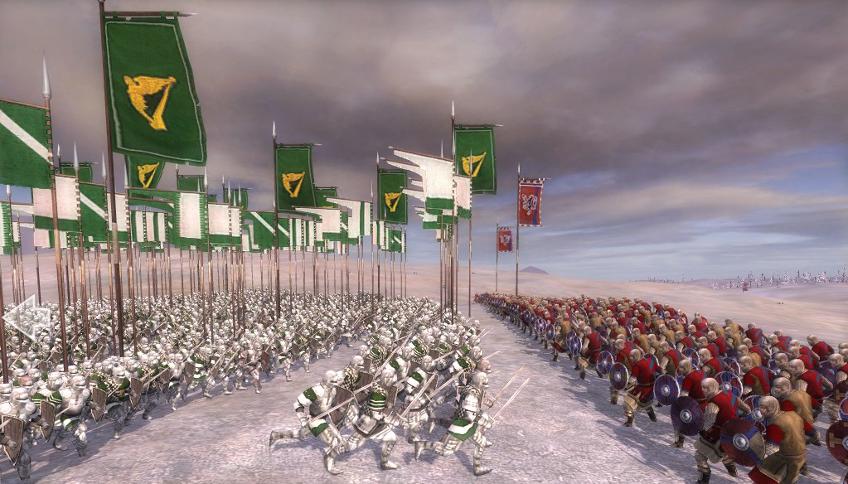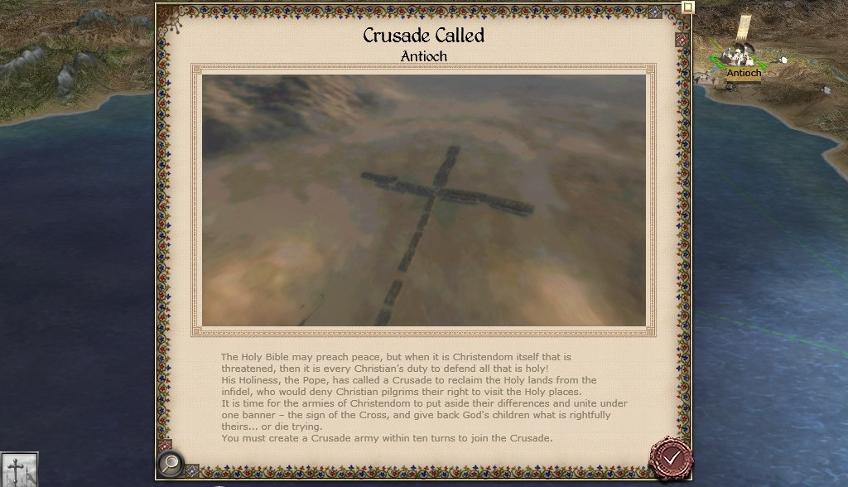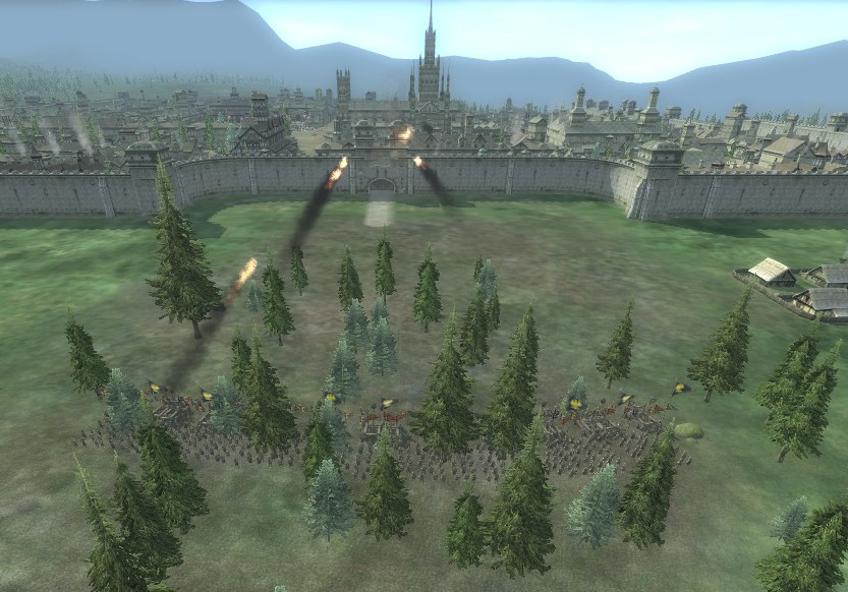I know this is an older game, but I wanted to review this one in the series because Total War: Rome II came out this September and I wanted to show you guys some of the classic games in the series.
If you haven’t played a Total War game, I recommend that you try one. They are a great mix of the turn-based strategy and the real-time strategy genres. They are one of the greatest strategy series I have ever played. They have a loyal fanbase, and most of the time the developers (Creative Assembly) give them what they want. With releases like Total War: Shogun 2 and recently, Total War: Rome II, new gamers have seen the power of these strategy games. The young gamers aren’t the only ones who have the privilege to see what Creative Assembly have done. Old fans of the series have enjoyed eight different titles, and all of them have brought something new to the table.
When you first start up Medieval II: Total War, you will find that that the graphics didn’t improve much from the previous Rome: Total War. There are still huge battles with thousands of soldiers flailing their swords at each others faces, and there are still detailed maps with castles, cities, and rolling hills. After a while you start to feel like you are actually playing Rome: Total War with a medieval mod installed. Sure there are different units, buildings, and nations, but the overall feel of the game doesn’t say “medieval”. I felt a great sense of Déjà vu, but that is not necessarily a bad thing. Also, it seemed like they took things out of Medieval II that were in the previous installments. For example, in Rome: Total War, I could view my city in the battle map without an actual battle going on, and I could see all the civilians walking around the town going about their daily lives. No matter how hard I tried, I couldn’t find out how to do this in Medieval II. Though this really didn’t matter much, it separated me a bit from the game, and I couldn’t get much of a connection with my cities.
One great thing about the game, is the unique features that are different from any in the previous installments. The use of religion in this game is brilliant. For example, if you are a Catholic nation (so pretty much most of Europe), you will find yourself being allies with other Catholic nations without the risk of being betrayed. This has a great advantage while playing, because most of the time you won’t have to worry about bordering nations taking you over. This also has some disadvantages too. For example, if you have a weak, Catholic nation at your borders and their land is rich with valuable resources, you won’t be able to attack that nation without being excommunicated from the Church. And when you are excommunicated, many Catholic nations won’t think twice about breaking down your walls. This added a new layer of strategy to the series. Also, when the Pope starts a crusade, all the Catholic nations work together to build one huge army to take back the Holy Land. This lets you have cities in Europe and cities in the Middle East which gives you a huge benefit from trade. You can either ignore this new religious feature or use it to your advantage. It is simply genius.
Another great thing about this game is the lack of bugs. Many people complained about the recent Total War: Rome II and how many major bugs there were. You don’t have to worry about that when you play this game. The only problem I have experienced is one time the mini-map was messed up a little, but other than that I have had some pretty smooth gameplay. In other words, if you have questioned buying a Total War game because of bugs, you won’t have to think twice about this one.
The new units in the game are unique to this era. Yes there is still peasants and other generic units that were in Rome: Total War, but there is a variety of knights, cannons, and riflemen. Also, certain units and buildings become unlocked as you progress through history. The game starts you off in 1080 a.d. (which I think is a little too late) and you can train units such as knights, bowmen, and cavalry. Eventually you will be shooting guns at enemies that might not have unlocked guns yet. This is an awesome feature that forces you to strive to be the most advanced faction.
Overall, I have to give this game a 7/10. Yes, this game has some great features, but it doesn’t really feel like I am playing a medieval game. The theme was one of the major reasons I was excited about playing this game, and without a lot of emphasis on it, it isn’t all that great. If you are a long time fan of the series and you don’t have Medieval II: Total War, buy it, but if you are someone who is new to the series, I recommend Total War: Shogun 2.
Graphics: 7/10 (For its time)
Dialogue: NA
Gameplay: 9/10
Replayability: 8/10
Pros |
Cons |
|
|
VERDICT:




